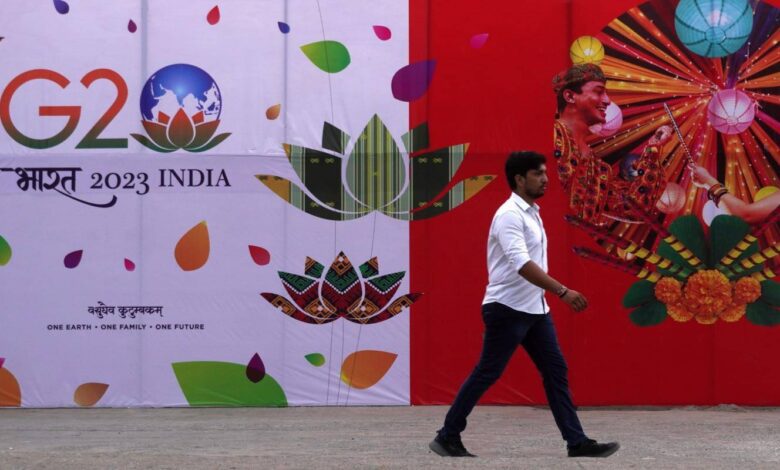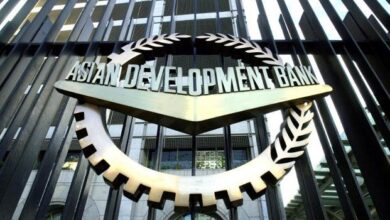
Today, we’re talking about the $3.8 trillion market moment, as the leaders of the G-20 nations gather in Delhi. This development holds the potential to redefine the global economic outlook and could position India at the forefront of international finance.
As the G-20 summit unfolds in New Delhi, world leaders are set to witness India’s increasing economic prominence. Prime Minister Narendra Modi is all geared up to showcase India’s robust stock market valuation, which has hit a record high, thanks to the surging foreign inflows.
India’s economic growth is one of the fastest in the world, driven by solid corporate earnings and a boom in retail investment. Consequently, the country’s equity benchmark is touching new heights, setting India apart from its emerging-market peers.
The $3.8 trillion question: When the who’s who of global economic powerhouses meet in Delhi, what’s at stake is a market worth $3.8 trillion. It’s a number that’s hard to fathom, equivalent to the combined GDP of several smaller nations. It’s a moment of great opportunity but also of great responsibility for India.
So, what does this mean for you, the everyday Indian citizen? How will this monumental get-together impact your life and those around you? We’ve made it easy to understand by breaking it down into some key points:
- The potential for job creation: With an economy of this scale, the potential for job creation is immense. Thousands of jobs across various sectors could be created, offering opportunities to millions of Indians.
- Infrastructure development: The influx of funds could lead to massive infrastructure development across the country, improving the quality of life for the entire population.
- Economic stability: A market of this size could bring about economic stability, boosting investor confidence and potentially leading to increased investment in India.
India’s struggling financial markets and economic woes of neighboring China, a major emerging market rival, have only enhanced India’s appeal. Goldman Sachs Group Inc. reports that developing-market money managers now consider India a “safe haven” in their Asia portfolios, while China is one of their major underweights.
Audrey Goh, an investment strategist at Standard Chartered Bank SG Ltd., notes that “Strong domestic growth prospects, ongoing policy reforms, and robust credit growth” are driving the superior performance of Indian equities. She also suggests that the shift to a multi-polar world is likely to favor India, as the government is striving to make business operations more attractive in the country.
India’s stock market hit a record valuation of $3.8 trillion
This week, India’s stock market hit a record valuation of $3.8 trillion. This milestone coincides perfectly with the G-20 summit, providing PM Modi an excellent platform to promote India’s potential as a geopolitical powerhouse.
With Western countries seeking to limit China’s influence, PM Modi has introduced a mix of tariffs and incentives to attract companies to manufacture in India. Apple Inc. and Samsung Electronics Co. are among the firms expanding their production in the country.
So far in 2023, foreign investors have purchased over $16 billion worth of Indian stocks on a net basis, marking the largest inflow in three years.
Chris Wood, the global head of equity strategy at Jefferies LLC, recently declared India as his favorite Asian market during a Bloomberg Television interview. He envisions strong growth in corporate earnings led by a resurgence in private investment and the real estate cycle over the next decade.
Since the global equities’ pandemic low in March 2020, India’s stock market value has nearly tripled, making it the world’s fifth-largest, according to Bloomberg. The US, on the other hand, has seen its market capitalization double during the same period.
Despite the promising growth, India faces potential risks. Resurgent crude oil prices may exacerbate inflation, which is already being fueled by rising prices of everyday commodities. Furthermore, the Indian Rupee is nearing an all-time low, and an upcoming general election in April-May could potentially swing markets.

Long-term challenges include improving infrastructure, enhancing education standards, and creating enough jobs for the growing young population in the face of rising automation and artificial intelligence. Despite these challenges, the current market sentiment is overwhelmingly positive, with the NSE Nifty 50 Index gaining almost 6% in dollar terms over the past three months.
However, not all investors are rushing to increase their exposure to India. Peter Marber, the New York-based head of emerging markets at Aperture Investors, argues that India needs years of improvements in infrastructure and private-sector development before it can replace China in portfolios. “Just because financial investors are retreating from Chinese stocks and bonds doesn’t lead to a complete shift to India,” he cautions.
In the meantime, Columbia Threadneedle Investments views India as one of its biggest equity overweights. The firm anticipates countries like Indonesia, Mexico, and Poland to benefit from the near-shoring boom as the US moves supply chains away from China. They are also bullish on Indian local-currency government bonds and dollar corporate debt, as well as the rupee.
As analyst Gordon Bowers of Columbia Threadneedle Investments puts it, “On a relative basis, India could be the biggest winner
Please, also have a look into : G20 summit done, thieves steal flower pots, lights, wires and even flags



